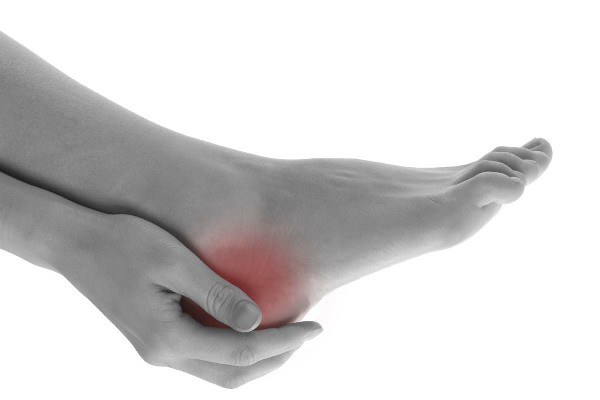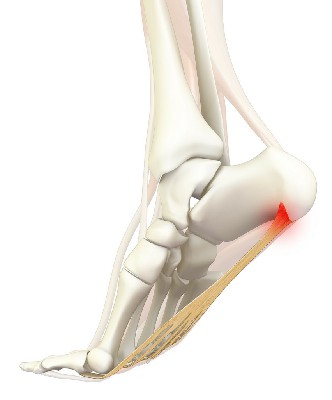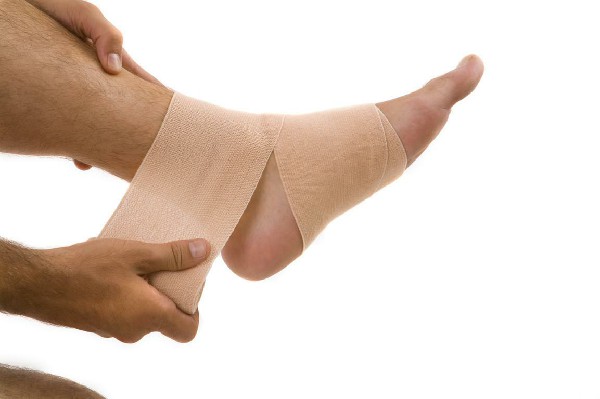Do not stay in one position for too long in any type of work as this can also cause ankle problems. Heel pain is slow to heal, so activity should be limited. However, it is important not to give up completely.

Why does the heel hurt in the morning or after rest?
One in eight people, mostly women, complains of heel pain in the morning or after rest. You cannot get up and move actively right away, but have to walk slowly until the pain subsides. In order to avoid serious consequences, painful sensations in the heels should not be dismissed simply as leg fatigue. It is necessary to find out and eliminate the cause of their occurrence, since the progression of the disease can lead to complete disability.

main causes
Of the 26 bones in the foot, the heel is the largest and most stressed, bearing the pressure of your entire body weight. It is traversed by many blood vessels and nerve fibers. The pain can be localized or affect the entire foot, and can be general and diffuse. The main causes are foot overload when there is too much pressure on the metatarsal bones, which can lead to the following situations:
- prolonged walking, running, or standing on your foot for a long time;
- overweight;
- dancing or athletics;
- intensive training on power machines for the leg muscles;
- Uncomfortable shoes that are too tight at the bottom or don't offer enough cushioning.
In the elderly, pain can occur from thinning of the fat pad on the heel or from the development of flat feet as the arch of the foot lowers and the tissue connecting it to the heel stretches and microfractures form. These problems are most common in people born with a high arch.

Heel pain in children can occur when the body is deficient in calcium and magnesium.
Why does the heel hurt?

The most common cause of heel pain (about 80% of cases) is plantar fasciitis. This is an injury and thickening of the heel fascia, the thick bundle of fibers that connects the heel bone to the rest of the foot. Damage to the heel fascia can occur in the following ways:
- an injury, e.g. B. running or dancing, which is more common in young and physically active people;
- Gradual wear and tear of plantar fascial tissue - typical in people over 40 years of age.
The risk of gradual wear and damage to the plantar fascia increases in people who are overweight or obese, spend most of the day on their feet, and wear flat-soled shoes, such as flip-flops or flip-flops.
With plantar fasciitis, heel pain is more likely to occur after sleeping. After a while, they become lighter, but in the middle of the day, during long walks, the heel pain increases again.
Less common causes of heel pain
heel spur – is a bony proliferation in the form of a spike in the heel. A heel spur is often a result of plantar fasciitis, but it can also develop spontaneously without causing heel pain.
Stress Fracture (Stress Fracture) Caused by sustained excessive stress on the heel bone while walking, running, jumping, etc. It is more common in people who play sports. Less common in osteoporosis, when the heel bone loses strength and simply walking or jogging can destroy its structure. A stress fracture is associated with excruciating pain that increases when pressure is applied to the heel. There may be slight swelling at the point of fracture.
Atrophy of the fat pad – Thinning of the layer of fat under the heel bone due to excessive pressure on it. The layer of fat between the bones of the foot and the skin plays an important role as a shock absorber when walking, cushioning the impact with the ground. The risk of developing fat pad atrophy is higher in women who walk in heels for long periods of time and in older people. Rarely, atrophy of the foot fat pad occurs after corticosteroid injections into the joints and after bone fractures. Orthoses can help with this cause of heel pain.
Diagnosis of heel pain

To diagnose heel pain, you should see an orthopedic trauma surgeon. In most cases, this is the specialist who will take care of your further treatment. If it is difficult to get an appointment with this specialist, you can first contact a surgeon. During the exam, you may need to see additional doctors: a rheumatologist to rule out systemic joint disease and a neurologist to rule out nerve disease in the foot.
There are some additional symptoms that can help you and your doctor diagnose the cause of your heel pain. For example, numbness or tingling in the foot is more likely to indicate nerve damage. This could be the tarsal tunnel syndrome described above or a symptom of generalized peripheral nerve damage such as B. in diabetes. If the foot feels hot and swollen, it could be a soft tissue infection or a heel bone infection. In such cases, the help of a surgeon is required. Restricted movement and pain in the ankles indicate the possible development of arthritis - an inflammation of the joints.
Your doctor may recommend the following tests to clarify the diagnosis
- blood tests;
- X-rays, which use a small dose of radiation to detect abnormalities in the bones;
- Magnetic resonance imaging (MRI) or ultrasound – more detailed examinations of the soft tissue.
- Treatment of plantar fasciitis.
- If your soles and heels hurt.
- Tear of the foot fascia.
- Structure of the human heel.
- heel joint.
- heel nerve.
- Treatment of plantar fasciitis at home.
- fasciitis.
